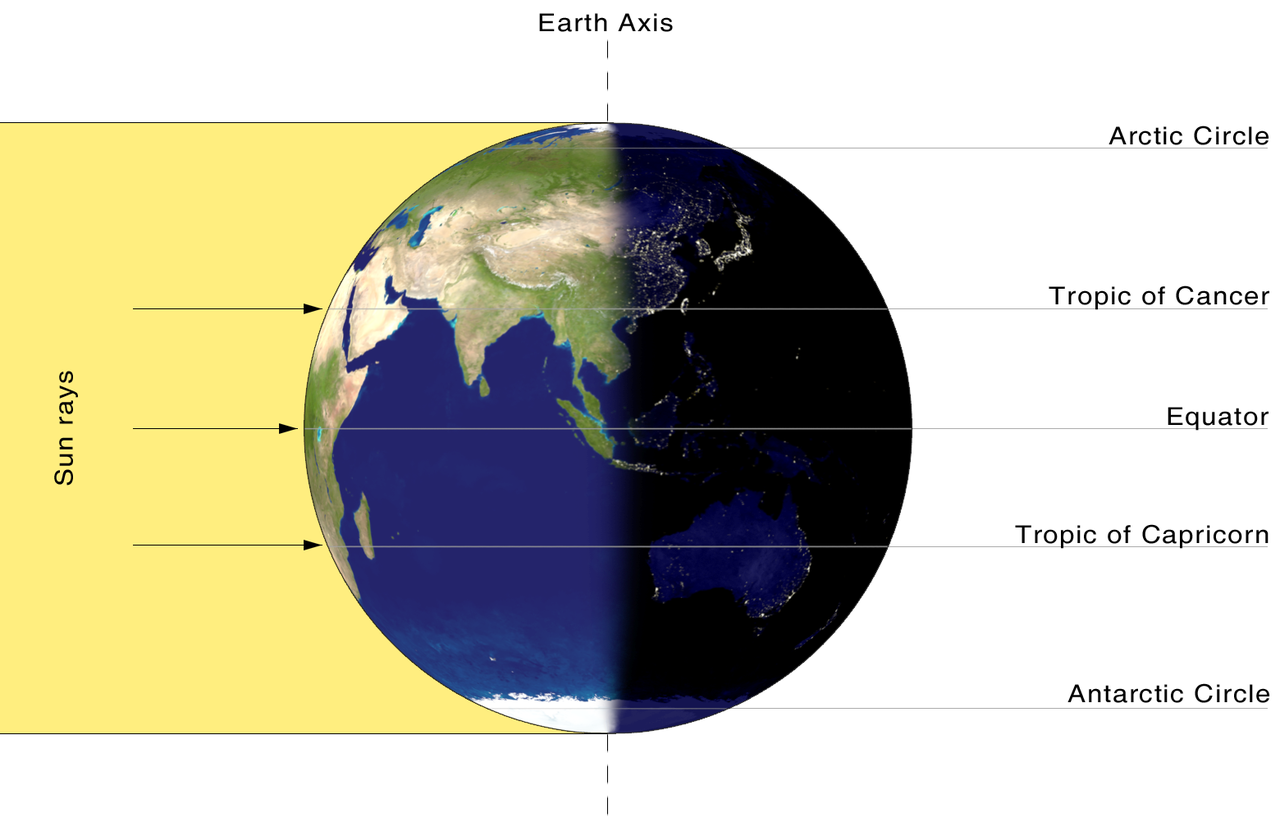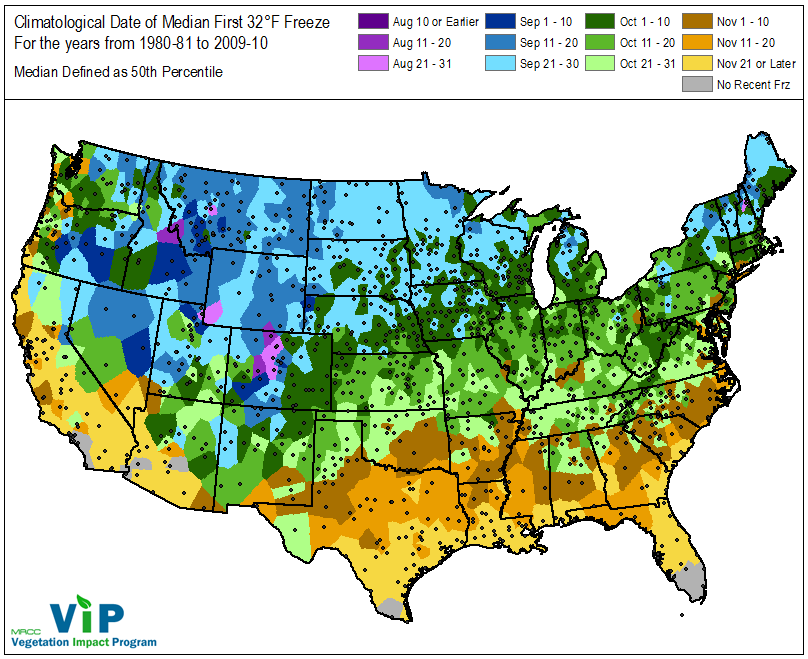Some parts of the country, especially the Northwest, the Rockies, and the Northern Plains, are enjoying the first crisp taste of autumn. Others to the south are still wallowing in summer-like warmth. Astronomically speaking, Thursday is the first day of fall whether you live in Truckee, California (low this morning = 27° F) or McAllen, Texas (high on Wednesday = 102° F). So what does it mean to say “it’s fall” with such a variety of weather across our nation?
ASTRONOMICAL AUTUMN:
At 10:21 am ET Thursday morning the Earth’s axis became perfectly perpendicular to the sun’s equator (see image below). The length of day and night are roughly equal, about 12 hours each, a circumstance we call the “equinox”. Thursday marks the beginning of what we call the astronomical fall, which will end on December 21st, the winter solstice. In the Northern Hemisphere, we’re in the process of losing daylight as we head toward winter. The sun is crossing the sky at a lower and lower angle to the horizon each day.

METEOROLOGICAL AUTUMN:
The combination of shorter days and lower sun angle generally means cooling temperatures. However, there’s a lag between the loss of daylight hours and the transition from summer to winter-type weather. For instance, in Atlanta, Georgia, you’ll find most still in t-shirts and shorts on any given fall equinox with normal highs around 80° F. In fact, the actual forecast calls for well above normal temps reaching the upper 80s to near 90° F in the next few days. Compare that with sweatshirt-appropriate average highs near 66° F in Atlanta on the spring equinox, March 20th, even though the length of daylight is exactly the same.
We can thank the accumulation of heat energy over land and ocean during the hot summer for the temporary delay of winter. Indeed, water retains heat even more efficiently than land, so the lag is more pronounced for areas near the warm Gulf of Mexico compared to land-locked places like the Northern Plains. The jet stream also tends to keep colder air bottled up in the northern latitudes through much of the early fall. It shifts south only gradually, reaching the southern states by November into December.

Any particular threshold used to track the onset of fall weather (such as the average date of the first freeze shown in the image above) varies from place to place. However, September 1st is the official first day of the meteorological fall season, the day after the end of the statistically warmest three months of the year.
QUIET FALL WEATHER:
The gentle drop in temperatures coincides with a relative lull in large-scale severe weather episodes. The loss of daytime heating means less fuel for summertime severe squalls, while the delay in cold air invasions tends to prohibit the development of big winter storms. The only exception, a significant one, is tropical cyclone activity, which peaks in mid-September. Residents of the Gulf coast and Eastern Seaboard know exactly how much of a disruption a marauding hurricane can be to autumnal peace.
Use the Morecast app for accurate forecast information tailored to your location! Follow us on Twitter and Facebook for big weather headlines and interesting articles.
